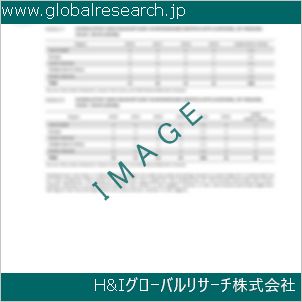Table of Contents
1 Industry Overview of Sulfurdioxide
1.1 Definition and Specifications of Sulfurdioxide
1.1.1 Definition of Sulfurdioxide
1.1.2 Specifications of Sulfurdioxide
1.2 Classification of Sulfurdioxide
1.3 Applications of Sulfurdioxide
1.3.1 Nuclear Application
1.3.2 Non-Nuclear Application
1.4 Industry Chain Structure of Sulfurdioxide
1.5 Industry Overview and Major Regions Status of Sulfurdioxide
1.5.1 Industry Overview of Sulfurdioxide
1.5.2 Global Major Regions Status of Sulfurdioxide
1.6 Industry Policy Analysis of Sulfurdioxide
1.7 Industry News Analysis of Sulfurdioxide
2 Manufacturing Cost Structure Analysis of Sulfurdioxide
2.1 Raw Material Suppliers and Price Analysis of Sulfurdioxide
2.2 Equipment Suppliers and Price Analysis of Sulfurdioxide
2.3 Labor Cost Analysis of Sulfurdioxide
2.4 Other Costs Analysis of Sulfurdioxide
2.5 Manufacturing Cost Structure Analysis of Sulfurdioxide
2.6 Manufacturing Process Analysis of Sulfurdioxide
3 Technical Data and Manufacturing Plants Analysis of Sulfurdioxide
3.1 Capacity and Commercial Production Date of Global Sulfurdioxide Major Manufacturers in 2023
3.2 Manufacturing Plants Distribution of Global Sulfurdioxide Major Manufacturers in 2023
3.3 R&D Status and Technology Source of Global Sulfurdioxide Major Manufacturers in 2023
3.4 Raw Materials Sources Analysis of Global Sulfurdioxide Major Manufacturers in 2023
4 Capacity, Production and Revenue Analysis of Sulfurdioxide by Regions, Types and Manufacturers
4.1 Global Capacity, Production and Revenue of Sulfurdioxide by Regions 2019-2024
4.2 Global and Major Regions Capacity, Production, Revenue and Growth Rate of Sulfurdioxide 2019-2024
4.3 Global Capacity, Production and Revenue of Sulfurdioxide by Types 2019-2024
4.4 Global Capacity, Production and Revenue of Sulfurdioxide by Manufacturers 2019-2024
5 Price, Cost, Gross and Gross Margin Analysis of Sulfurdioxide by Regions, Types and Manufacturers
5.1 Price, Cost, Gross and Gross Margin Analysis of Sulfurdioxide by Regions 2019-2024
5.2 Price, Cost, Gross and Gross Margin Analysis of Sulfurdioxide by Types 2019-2024
5.3 Price, Cost, Gross and Gross Margin Analysis of Sulfurdioxide by Manufacturers 2019-2024
6 Consumption Volume, Consumption Value and Sale Price Analysis of Sulfurdioxide by Regions, Types and Applications
6.1 Global Consumption Volume and Consumption Value of Sulfurdioxide by Regions 2019-2024
6.2 Global and Major Regions Consumption Volume, Consumption Value and Growth Rate of Sulfurdioxide 2019-2024
6.3 Global Consumption Volume and Consumption Value of Sulfurdioxide by Types 2019-2024
6.4 Global Consumption Volume and Consumption Value of Sulfurdioxide by Applications 2019-2024
6.5 Sale Price of Sulfurdioxide by Regions 2019-2024
6.6 Sale Price of Sulfurdioxide by Types 2019-2024
6.7 Sale Price of Sulfurdioxide by Applications 2019-2024
6.8 Market Share Analysis of Sulfurdioxide by Different Sale Price Levels
7 Supply, Import, Export and Consumption Analysis of Sulfurdioxide
7.1 Supply, Consumption and Gap of Sulfurdioxide 2019-2024
7.2 Global Capacity, Production, Price, Cost, Revenue, Supply, Import, Export and Consumption of Sulfurdioxide 2019-2024
7.3 USA Capacity, Production, Price, Cost, Revenue, Supply, Import, Export and Consumption of Sulfurdioxide 2019-2024
7.4 EU Capacity, Production, Price, Cost, Revenue, Supply, Import, Export and Consumption of Sulfurdioxide 2019-2024
7.5 China Capacity, Production, Price, Cost, Revenue, Supply, Import, Export and Consumption of Sulfurdioxide 2019-2024
7.6 Japan Capacity, Production, Price, Cost, Revenue, Supply, Import, Export and Consumption of Sulfurdioxide 2019-2024
8 Major Manufacturers Analysis of Sulfurdioxide
8.1 Manufacturer One
8.1.1 Company Profile
8.1.2 Product Picture and Specifications
8.1.2.1 Type I
8.1.2.2 Type II
8.1.2.3 Type III
8.1.3 Capacity, Production, Price, Cost, Gross and Revenue
8.1.4 Contact Information
8.2 Manufacturer Two
8.2.1 Company Profile
8.2.2 Product Picture and Specifications
8.2.2.1 Type I
8.2.2.2 Type II
8.2.2.3 Type III
8.2.3 Capacity, Production, Price, Cost, Gross and Revenue
8.2.4 Contact Information
8.3 Manufacturer Three
8.3.1 Company Profile
8.3.2 Product Picture and Specifications
8.3.2.1 Type I
8.3.2.2 Type II
8.3.2.3 Type III
8.3.3 Capacity, Production, Price, Cost, Gross and Revenue
8.3.4 Contact Information
8.4 Manufacturer Four
8.4.1 Company Profile
8.4.2 Product Picture and Specifications
8.4.2.1 Type I
8.4.2.2 Type II
8.4.2.3 Type III
8.4.3 Capacity, Production, Price, Cost, Gross and Revenue
8.4.4 Contact Information
8.5 Manufacturer Five
8.5.1 Company Profile
8.5.2 Product Picture and Specifications
8.5.2.1 Type I
8.5.2.2 Type II
8.5.2.3 Type III
8.5.3 Capacity, Production, Price, Cost, Gross and Revenue
8.5.4 Contact Information
…
9 Marketing Trader or Distributor Analysis of Sulfurdioxide
9.1 Marketing Channels Status of Sulfurdioxide
9.2 Traders or Distributors with Contact Information of Sulfurdioxide by Regions
9.3 Ex-work Price, Channel Price and End Buyer Price Analysis of Sulfurdioxide
9.4 Regional Import, Export and Trade Analysis of Sulfurdioxide
10 Industry Chain Analysis of Sulfurdioxide
10.1 Upstream Major Raw Materials Suppliers Analysis of Sulfurdioxide
10.1.1 Major Raw Materials Suppliers with Contact Information Analysis of Sulfurdioxide
10.1.2 Major Raw Materials Suppliers with Supply Volume Analysis of Sulfurdioxide by Regions
10.2 Upstream Major Equipment Suppliers Analysis of Sulfurdioxide
10.2.1 Major Equipment Suppliers with Contact Information Analysis of Sulfurdioxide
10.2.2 Major Equipment Suppliers with Product Pictures Analysis of Sulfurdioxide by Regions
10.3 Downstream Major Consumers Analysis of Sulfurdioxide
10.3.1 Major Consumers with Contact Information Analysis of Sulfurdioxide
10.3.2 Major Consumers with Consumption Volume Analysis of Sulfurdioxide by Regions
10.4 Supply Chain Relationship Analysis of Sulfurdioxide
11 Development Trend of Analysis of Sulfurdioxide
11.1 Capacity, Production and Revenue Forecast of Sulfurdioxide by Regions and Types
11.1.1 Global Capacity, Production and Revenue of Sulfurdioxide by Regions 2024-2029
11.1.2 Global and Major Regions Capacity, Production, Revenue and Growth Rate of Sulfurdioxide 2024-2029
11.1.3 Global Capacity, Production and Revenue of Sulfurdioxide by Types 2024-2029
11.2 Consumption Volume and Consumption Value Forecast of Sulfurdioxide by Regions, Types and Applications
11.2.1 Global Consumption Volume and Consumption Value of Sulfurdioxide by Regions 2024-2029
11.2.2 Global and Major Regions Consumption Volume, Consumption Value and Growth Rate of Sulfurdioxide 2024-2029
11.2.3 Global Consumption Volume and Consumption Value of Sulfurdioxide by Types 2024-2029
11.2.4 Global Consumption Volume and Consumption Value of Sulfurdioxide by Applications 2024-2029
11.3 Supply, Import, Export and Consumption Forecast of Sulfurdioxide
11.3.1 Supply, Consumption and Gap of Sulfurdioxide 2024-2029
11.3.2 Global Capacity, Production, Price, Cost, Revenue, Supply, Import, Export and Consumption of Sulfurdioxide 2024-2029
11.3.3 USA Capacity, Production, Price, Cost, Revenue, Supply, Import, Export and Consumption of Sulfurdioxide 2024-2029
11.3.4 EU Capacity, Production, Price, Cost, Revenue, Supply, Import, Export and Consumption of Sulfurdioxide 2024-2029
11.3.5 China Capacity, Production, Price, Cost, Revenue, Supply, Import, Export and Consumption of Sulfurdioxide 2024-2029
11.3.6 Japan Capacity, Production, Price, Cost, Revenue, Supply, Import, Export and Consumption of Sulfurdioxide 2024-2029
12 New Project Investment Feasibility Analysis of Sulfurdioxide
12.1 New Project SWOT Analysis of Sulfurdioxide
12.2 New Project Investment Feasibility Analysis of Sulfurdioxide
13 Conclusion of the Global Sulfurdioxide (CAS 7446-09-5) Industry 2024 Market Research Report
| ※参考情報 二酸化イオウ(Sulfurdioxide)は、化学式SO₂で表される無色のガスであり、特有の刺激臭を持っています。この物質は、主に硫黄の燃焼によって生成されるほか、いくつかの工業過程でも生成されます。CAS番号は7446-09-5であり、化学的には二酸化硫黄とも呼ばれています。 二酸化イオウは、その特性から多くの分野で利用されています。まず、二酸化イオウは水に溶けると硫酸イオンと亜硫酸イオンを生成し、酸性の性質を持っています。このため、農業では土壌の酸性度を調整するために利用されることがあり、特に酸性土壌での作物の生育を促進する役割を果たします。また、飲用水や食品に対しても、この酸性特性が損傷から守るために使用されることがあります。 二酸化イオウは、食品業界でも広く利用されています。特に、ワインやドライフルーツの保存において重要な役割を果たしています。ワインの製造過程では、発酵を助けるとともに、微生物の成長を抑えるために添加されます。ドライフルーツに関しては、その色合いを保持し、酸化を防ぐ目的で使われることが一般的です。さらに、二酸化イオウは、食品添加物として利用される際には、その安全性が認められています。 環境の観点から見ると、二酸化イオウは大気中で重要な役割を担っています。大気中に放出されると、他の化合物と反応し、硫酸エアロゾルを生成することがあります。このエアロゾルは、雲の形成に寄与し、気候に影響を与えることがあります。しかし、二酸化イオウは人体に対して有害であり、高濃度になると呼吸器や目に影響を及ぼすことがあります。そのため、環境基準は厳しく設けられており、産業活動においては排出量の管理が求められています。 二酸化イオウの製造は、主に硫黄鉱石を燃焼させることによって行われます。このプロセスは、高温での酸化反応によって二酸化硫黄が生成されるもので、工業的には効率的な手法として確立されています。また、再生可能エネルギー源を利用した新たな技術も進められており、環境負荷の低減に寄与しています。 このように、二酸化イオウはその特性から多用途にわたって利用されていますが、その一方で環境や健康への影響も大きい物質であることから、取り扱いには注意が必要です。現在では、より安全な代替物の研究や技術開発も進められており、二酸化イオウの利用限界と可能性が問われる時代となっています。 今後の展望としては、二酸化イオウの排出削減技術や効果的な利用方法の模索が続くでしょう。環境への影響を抑えつつも、その利点を最大限に引き出すためには、持続可能な開発の視点が重要です。研究者や業界が協力して、新たな技術や適切な規制を整備することで、将来的にはより環境に優しい二酸化イオウの利用が実現できることを期待しています。 |
❖ 免責事項 ❖
http://www.globalresearch.jp/disclaimer


-gr.jpg)









